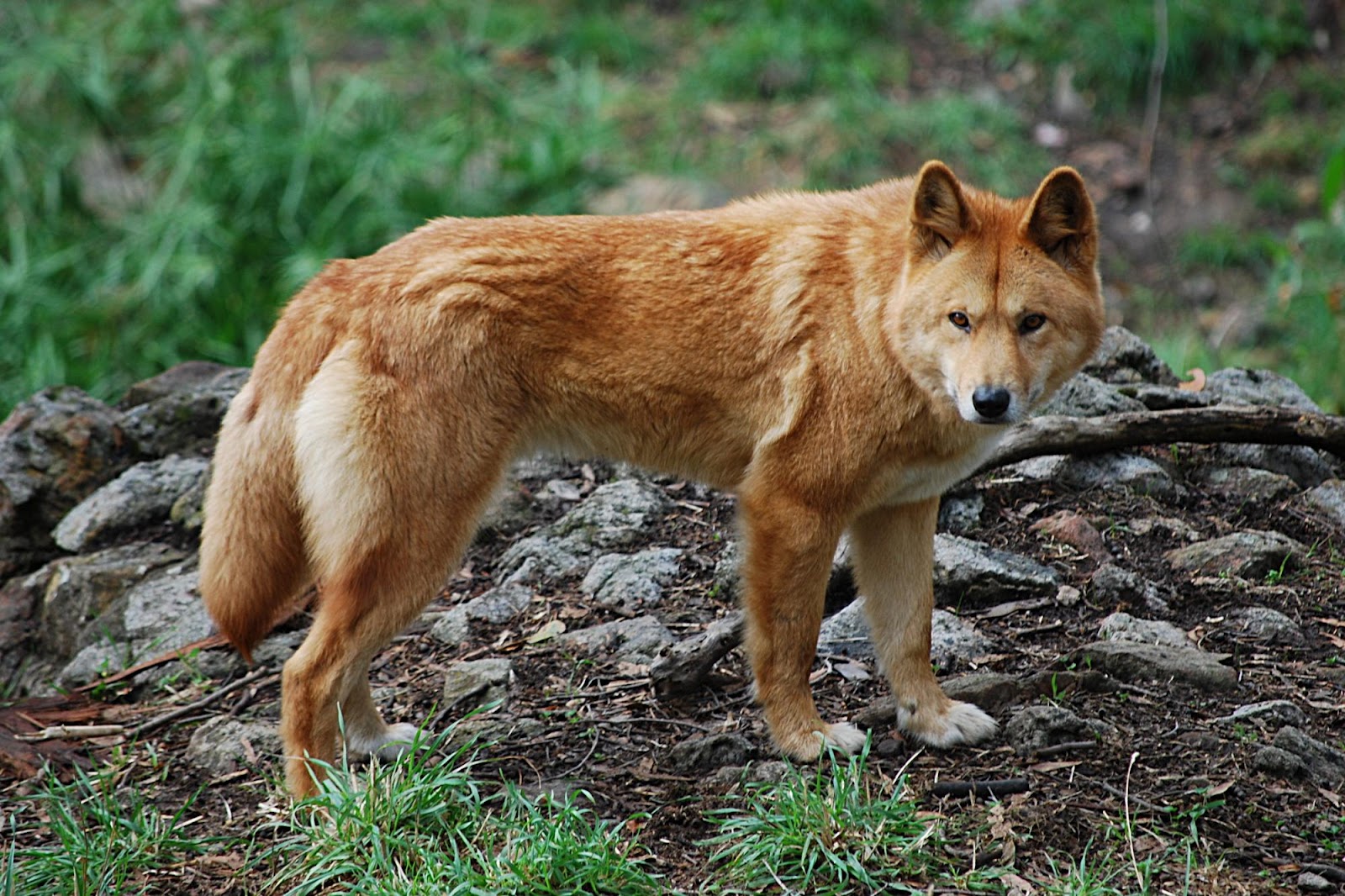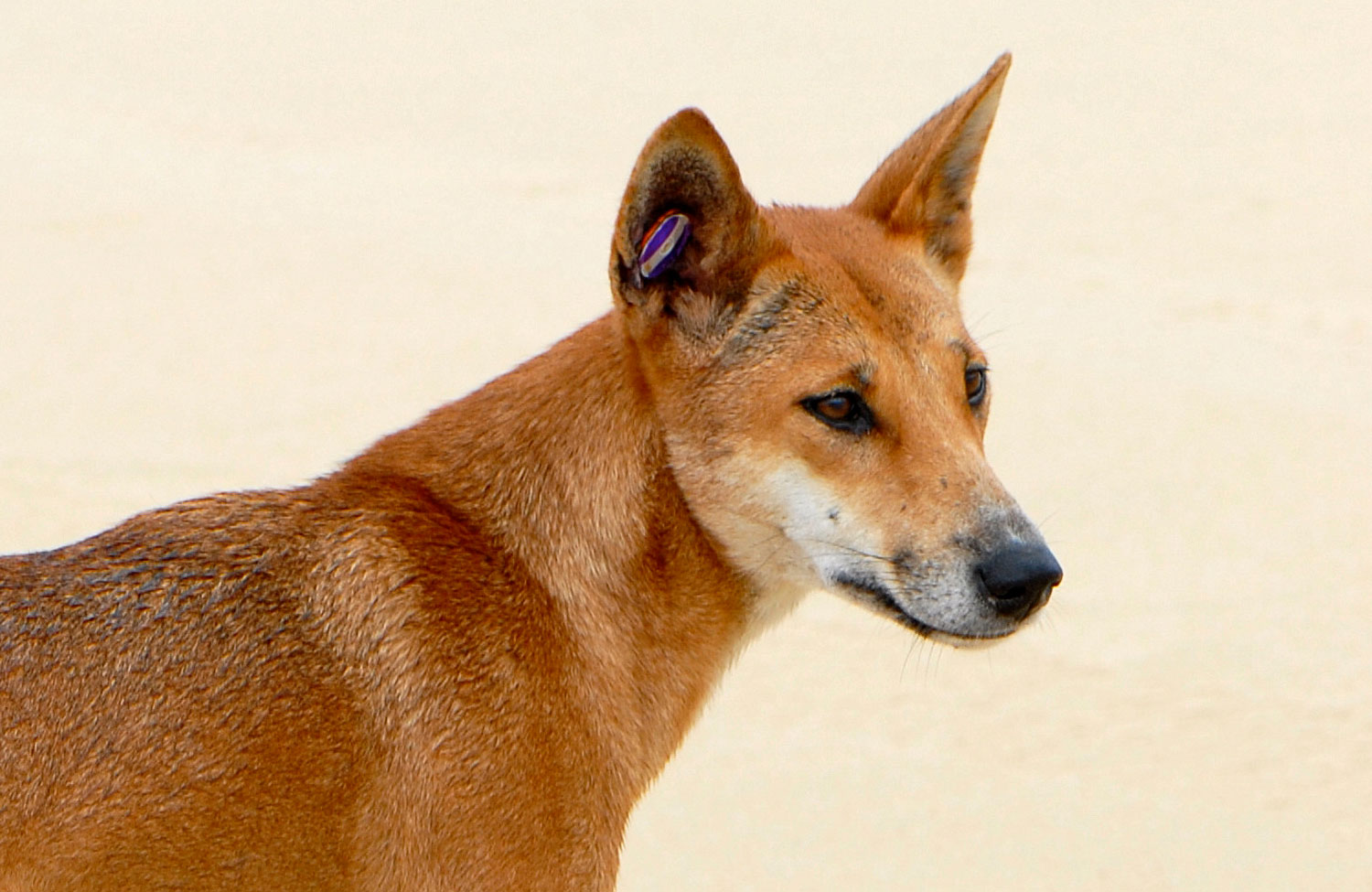
Mike Letnic (University of New South Wales) who has examined the role of Dingoes in structuring ecosystems and sustaining biodiversity at Pilungah Reserve. We selectively control feral dogs, which compromise the Dingoes’ genetic ‘purity’. We recognise Dingoes as an important natural predator and an important part of the ecology of the Australian landscape. Dingoes are also common across many of our Aboriginal partners’ properties including the Birriliburu and Wunambal Gaambera.

We have Dingoes on Charles Darwin and Hamelin Station reserves in WA and on our Carnarvon, Pilungah, Ethabuka, Goonderoo and Yourka reserves in Queensland. Nature reserves are often blamed for ’breeding’ or harbouring Dingoes, so parks authorities are often obliged to bait along their boundaries. On reserves, Dingoes are protected, but even there regularly fall victim to pig-baiting. While it’s protected in some states, in many areas it’s a declared pest, and outside of nature reserves, may be controlled, in the same way as hybrids and feral dogs. The status of the Dingo as a ‘pest’ or native species is the subject of much debate. The Dingo is persecuted on a massive scale with broad-scale baiting, trapping and shooting.įor this reason the Dingo is listed as Vulnerable to extinction under the International Union of Nature Conservation’s Red List of Threatened Species.

While the animals that arrived in Australia 3,000 to 4,000 years ago have been shaped by the continent into a distinct form (recently proposed as a separate species), this form is still capable of inter-breeding and hybridizing with imported domestic dogs – also ultimately derived from the wolf – and so are susceptible to dilution of the genetic stock characteristic of the Australian Dingo. Like many native Australian species a major threat is habitat loss, although they’ve persisted in modified rural landscapes. 5 Dingoes live for about 10 years in the wild. In packs a dominant breeding female will kill the offspring of other females. She’ll give birth to between four and six pups, which stay with her until they’re six to eight months old. A female will give birth in a cave, under a rock ledge or in a hollow log. Dingoes also regulate numbers of feral herbivores such as goats, deer and rabbits, aiding in the survival of native species. wallabies, kangaroos) so there’s less predation pressure on small to medium fauna. Unlike cats and foxes, Dingoes prefer larger prey (e.g. Perhaps counter-intuitively, a healthy Dingo population is good for small to medium-sized mammals (and reptiles and birds), because Dingoes suppress feral predators (cats and foxes) through direct predation and indirect interference (cats and foxes avoid them). 3 They mainly hunt at dawn, dusk and during the night, and communicate with wolf-like howls, rarely barking. Fish are a large part of the Frazer Islands Dingo’s diet, and in the Northern Territory, Dingoes are known to hunt water buffalo! 2 Depending on the size of the prey, they hunt alone or in cooperative packs. The bulk of their diet is made up of meat: they eat kangaroos, wallabies, feral pigs, wombats, small mammals (rabbits, rodents), birds and lizards. They’re opportunistic hunters, but will also scavenge food. The Dingo is Australia’s largest terrestrial carnivore, though it occasionally eats plants and fruits. Where do Dingoes live?ĭingoes are found across most of mainland Australia – from deserts to snow-covered alpine areas, from grasslands to rainforests, though they favour edges of forests next to grasslands. 1Regardless of the exact timing of their arrival, Dingoes are considered native to Australia. Analysis of the genetics of both the Dingo and the closely related New Guinea Singing Dog provides evidence that they arrived in Oceania at least 8,300 years ago.

Research into their origin and the timing of their arrival is ongoing. They feature in dreamtime stories and ceremonies, on cave paintings and rock carvings.ĭingoes descend from Asian canids. They usually remain in one area but can cover large distances beyond their territory if conditions require or when young animals disperse.ĭingoes hold a significant place in the spiritual and cultural practices of many Aboriginal and Torres Strait Islander communities. Pack animals, dingoes live in groups of 10 or so individuals, though young males are often solitary. They typically have white markings on their chest, feet and tail tip.

Their coats are commonly golden yellow, but they may have reddish, tan and black fur. Dingoes are naturally lean, weighing between 13kg and 18kg and standing about 60cm tall.


 0 kommentar(er)
0 kommentar(er)
